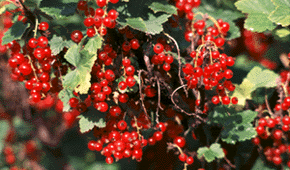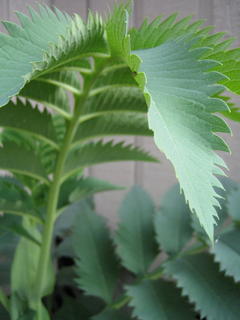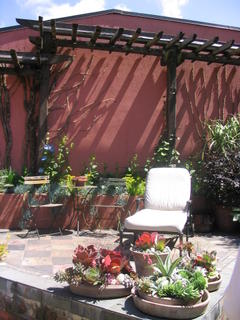
Scarlet Runner Beans
An edible landscape, simply put, is one that provides value visually and on the table.
There are hundreds of good-looking edible plants that you can easily tuck into your perennial borders, containers, or even as a stand-alone
potage. And just think of being able to pick and eat vegetables that you've grown yourself. Now isn't that more satisfying than scoring the last Echineacea 'Mango Meadowbrite' on sale?
Here are just a few of my favourite attractive edibles:Globe artichokes (If only they could flower and still be eaten)
Beets (choose Burpee's Golden OP plus a standard red like Kestrel for contrast)
Chard (Rainbow or 'Bright Lights')
Pumpkin (lovely broad leaves followed by autumn joy)
'Flying Saucer' squash (and they do look otherworldly)
Corn (although, if you can find a way to keep the squirrels from stealing the cobs, please let me know!)
Leeks Lettuce (I usually plant a few varieties so they mature at different times)
Herbs! (Basil, parsley, oregano, chives, dill, cilantro, sage, thyme, mint)
Tomatoes (cherry, roma, field)

'Bright Lights' Swiss Chard

Red Currants
Take a cue from your
Commercial Drive neighbours and grow grapes, figs and, yes, tomatoes. Plant peas or beans alongside your clematis. Scatter dill, parsley and marjoram seeds among your flowerbeds.
It's a style of gardening that might not work for everyone. It takes a tremendous amount of foresight and planning, and not everything grows the way you want it to. I guess that's standard in gardening, but at least with vegetables you can more-easily grow from seed. And that's something that's satisfying in and of itself.





























